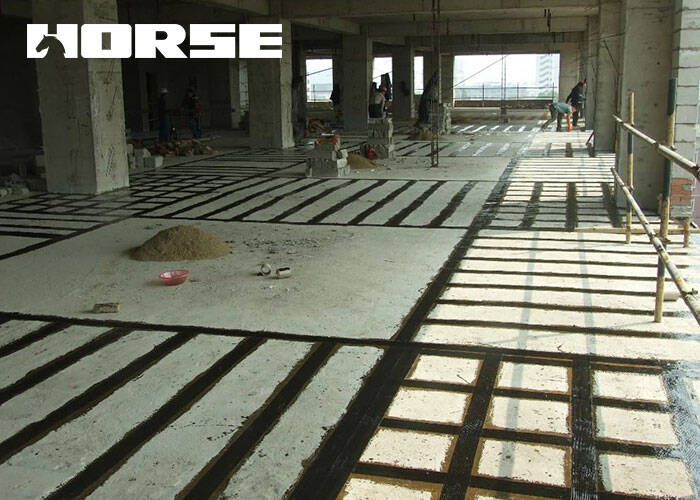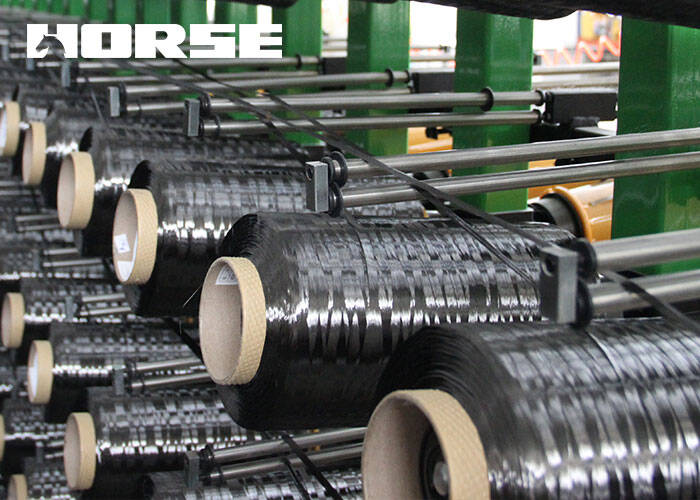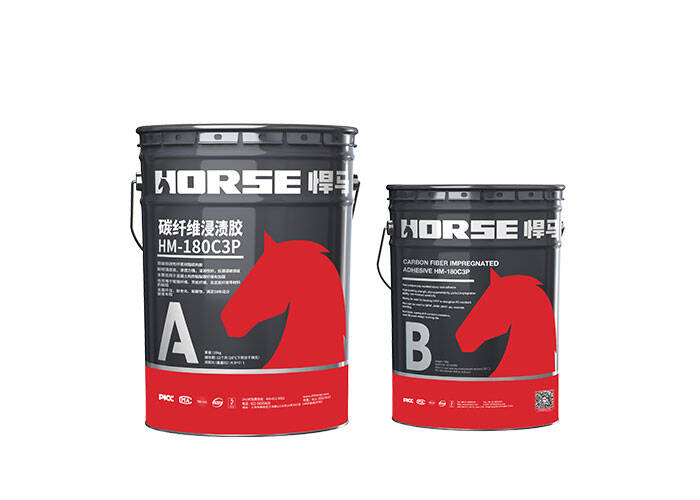Solutions
Horse Construction offers full range of structural strengthening materials with technical supports, documentation supports, products supports, project supports.
carbon fiber strengthening concrete structures

1 Applicability
Although carbon fiber has the advantages of light weight, high strength, acid and alkali resistance, no construction space, simple construction and almost no wet operation, it also has some weaknesses that are difficult to control. The most important thing is that it is difficult to assess the risks to safety caused by fire, man-made damage or other accidents. Therefore, it is stipulated in European and American design guidelines that the original structure and components reinforced with carbon fiber should have the ability to bear its own weight and a small amount of live load. This shows that carbon fiber reinforcement can only improve the overall safety of the reinforced part of the structure, but cannot resist the damage that would cause the original structure and components to collapse. In the scope of application of our foreign bonded carbon fiber reinforcement method, it is also clear that it is only applicable to the reinforcement of the following projects:
(1) The original structure and components to be reinforced are basically intact, but their ability to withstand live loads needs to be increased.
(2) Due to design or construction problems, the original structure and components are less equipped with tensile steel bars or stirrups that need to be reinforced (but it should be noted that the existing reinforcement ratio shall not be lower than the minimum reinforcement ratio specified in GB50010).
(3) To enhance the seismic capacity of the original structure and components.
(4) Used in places with corrosive media.
In addition, when evaluating the feasibility of using external carbon fiber to strengthen concrete structures and components, other reinforcement techniques should be used in the following situations:
(1) The cross-section design of the original structure and components has reached the maximum reinforcement ratio because it is invalid reinforcement.
(2) The torsion of the original structure and components is overwhelming, and it is invalid to repair.
(3) The original structure and components have been broken, because the load-bearing function is difficult to be fully restored by pasting carbon fiber materials, and it is easy to endanger safety due to accidental action.
(4) The measured concrete strength grade of the original structure and components is lower than C20 for important structures; for a general structure lower than C15, because of the high risk of peeling.
(5) In the use environment of high temperature or high humidity, the carbon fiber is pasted with ordinary adhesive, because it is easy to cause the interface bonding failure.
(6) When the fire hazard is high and there is no reliable fire protection layer, it is because the adhesive fails during the fire.
2 The choice of carbon fiber
2.1 The choice of carbon fiber raw materials
Carbon fiber cloth for reinforcement of load-bearing structures is generally woven from unidirectionally arranged tows. The quality of its performance is not only related to the weaving method, but also depends on the quality of the carbon fiber tow used. Therefore, when choosing carbon fiber cloth, we should first check whether the type, grade and model of the tow meet the requirements of the load-bearing structure. According to the different uses of carbon fiber tow and its work requirements, the tow is generally divided into 5 grades. Namely: Ultra High Strength (uHs), High Strength (HS), Normal (CHS) and Ultra High Modulus (UHM), High Modulus (HM). Commonly used in engineering are high-strength grade and ordinary grade.

2.2 The choice of carbon fiber fabric
Woven fabrics should be the first choice for carbon fiber fabrics for engineering structural reinforcement. Non-woven fabrics and stitch-woven fabrics are prone to sticking problems, so it is best not to use them in the reinforcement of load-bearing structures. The woven fabric suitable for reinforcement of the load-bearing structure is a unidirectional plain weave fabric with a thin weft structure. The main features are:
(1) Carbon fiber is not affected by the fixing weft, and can fully develop the performance of the tow.
(2) The adhesion between the warp yarn and the weft yarn is good and dispersed. The carbon fibers can be straightened and arranged, and the gap between each bundle of fibers is conducive to the infiltration of the adhesive and the elimination of air bubbles.
(3) It is easy to cut and the fibers are not easy to scatter.
(4) Warp fibers (content ≥97%) can give full play to the reinforcing effect of longitudinal tension.

3 Choice of adhesive
To ensure the quality of carbon fiber paste, in addition to strictly following the operating procedures and requirements specified in the specification, the more important thing is the good wettability and permeability of the adhesive itself. Modified epoxy resin should be the first choice. It has good properties such as acid and alkali resistance, elongation, strength, aging resistance, humidity resistance, heat resistance, etc., and has low shrinkage and low odor. Adhesives such as unsaturated polyester, alkyd resin and vinyl ester will gradually be eliminated due to their own performance problems. The basic performance of existing modified epoxy resin adhesive products is not much different, but the difference in process performance will affect the bonding effect and later strength of carbon fiber. Better products have a long initial curing time, which enables the adhesive to have a certain period of time (such as 6-8h, or even more than 12h) to continuously infiltrate and penetrate. The post-curing is significantly accelerated, and the strength required for subsequent construction can generally be reached within 16 to 18 hours.
Infiltration, bonding and curing by the adhesive are key links in the construction process of carbon fiber reinforcement:
(1) Form an effective bond with the concrete base layer, so that the carbon fiber fabric and the reinforced component are completely integrated, and the stress on the component is effectively transferred to the composite material layer.
(2) Fully infiltrate and infiltrate the carbon fiber fabric, solidify the carbon fiber tow and the fabric layer to be relatively fixed, forming a strong composite material layer that acts in concert and exerts the role of each carbon fiber thread.
(3) Protect the composite material layer from various harmful environmental factors.
Among them, the full infiltration of the adhesive to the carbon fiber depends more on its working viscosity: its viscosity is small, the bonding force is large, and the bonding strength is also large; and vice versa. Therefore, measures should be taken to increase the infiltration rate as much as possible to achieve the purpose of increasing the bonding strength. For example: during the construction, while ensuring the thickness of the glue and not flowing, try to clean the surface and increase the construction temperature on site.

4 The structure of carbon fiber reinforcement at the beam-column node position
The beam-column node is in the negative bending distance area, and the structural method of bending reinforcement is to deal with the difficult point, mainly to solve the phenomenon that carbon fiber is easy to peel off in this part. The L-shaped carbon fiber board can be used in the reinforcement of important buildings, and the steel-bonded treatment can be used in the negative bending area.
You can find anything here you are in need of, have a trust trying on these products, you will find the big difference after that.

High strength, unidirectional carbon fiber wrap pre-saturated to form a carbon fiber reinforced polymer (CFRP) wrap used to strengthen structural concrete elements.

High strength, unidirectional carbon fiber fabric pre-saturated to form a carbon fiber reinforced polymer (CFRP) fabric used to strengthen structural concrete elements.

High strength, unidirectional carbon fiber sheet pre-saturated to form a carbon fiber reinforced polymer (CFRP) sheet used to strengthen structural concrete elements.